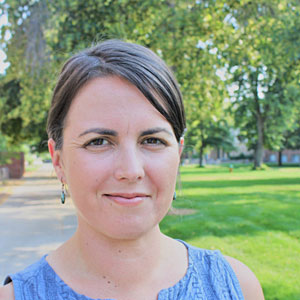As emergent pathogens like coronavirus and climate-related health challenges like wildfire smoke plague human populations, the University of Montana has received funding for a center dedicated to understanding and addressing public health challenges to Montana and the region.
The National Institutes of Health awarded the University a five-year $10.75 million grant to establish the Center for Population Health Research (CPHR, pronounced “see-far”). The center will support epidemiological and mathematical modeling approaches to better understand risk and resilience factors for children’s health outcomes. It also will create disease prevention strategies developed for, adapted to and tested in rural communities.
“We are excited about this opportunity to improve the health of children in Montana and the region,” said Curtis Noonan, center director and a professor of epidemiology in UM’s School of Public and Community Health Sciences. “This comes at a challenging time for the public health community.
“We could not have predicted the current coronavirus threat when we started building this center over two and a half years ago,” he said, “but we did recognize the importance of developing the capacity to work with medical and public health data to better understand health risk in our communities and identify disease prevention strategies that are relevant to rural states.”

CPHR research projects establish scientific capacity and a collaborative infrastructure highly relevant to the COVID-19 pandemic. Erin Landguth leads a project to better understand the factors that influence respiratory infection among children.
“In the face of today’s infectious disease complexities, mathematical models offer essential tools for synthesizing information to understand epidemiological patterns and for developing the quantitative evidence base for decision-making in public health,” Landguth said. “Partnering with pediatric health care providers, my project will integrate novel data streams, computational capacity and new modeling tools, allowing for the description of how respiratory infections vary across space and time – particularly in rural communities where such work is limited.”

Public health leaders anticipate that a coronavirus vaccine, when developed, will be an essential component of controlling the current pandemic. A CPHR project led by Sophia Newcomer focuses on identifying the barriers to early childhood vaccinations, especially in rural areas where childhood vaccination rates are lower than public health targets.
“Vaccines are the most effective tool we have for infectious disease control and prevention,” said Newcomer. “Working with the state health department and local providers, my project seeks to identify why some Montana children fall behind or don’t receive recommended vaccines and to develop strategies to increase vaccination rates across the state.”

Environmental epidemiologist Erin Semmens leads a third research project investigating the impact of community exposures to smoke from wildfires – an increasingly recognized and now constant public health threat to the region.
“Wildfire events are increasing in frequency, duration and intensity due to climate change,” Semmens said. “Through a collaboration with the Montana Department of Health and Human Services, local health systems and UM colleagues across campus, our project aims to quantify how these exposures influence early childhood development, as well as birthweight and risk of preterm birth. Both are linked to long-term susceptibility to disease and infections.”
A key feature of CPHR is to provide core resources to support both current and future researchers who explore important population health questions. The Data and Modeling Core, led by Jon Graham, provides center researchers with tools and infrastructure for working with sensitive electronic data such as medical records and state health tracking systems.
To effectively translate research findings to action, the Intervention Support Core, led by Tony Ward, provides CPHR investigators with the expertise and tools for designing novel disease prevention and health promotion strategies. Such strategies will be further informed by the CPHR Stakeholder Advisory Board, which includes key players in the health care, public health and policy arenas.
Reed Humphrey, dean of the College of Health that includes the School of Public and Community Health Sciences, said the award to establish CPHR at UM demonstrates the college’s capacity and commitment to grow its reach in public health.
“Importantly, it opens the doors to enhanced collaboration across our health professions at UM and our Family Medicine Residency that are consistent with our parallel commitment in interprofessional education and collaborative practice,” Humphrey said.
CPHR resources and research projects also provide fantastic opportunities for graduate and undergraduate students to engage in cutting-edge, NIH-funded research.
“This project provides undergraduate and graduate students from several departments across campus the opportunity to work with our world-class faculty in research areas that have become increasingly relevant in light of the COVID-19 pandemic,” said UM Vice President for Research and Creative Scholarship Scott Whittenburg. “The University of Montana is rapidly becoming a leader in vaccine development and implications for public health.”
###
Contact: Curtis W. Noonan, director, UM Center for Population Health Research, 406-243-4957, curtis.noonan@umontana.edu.